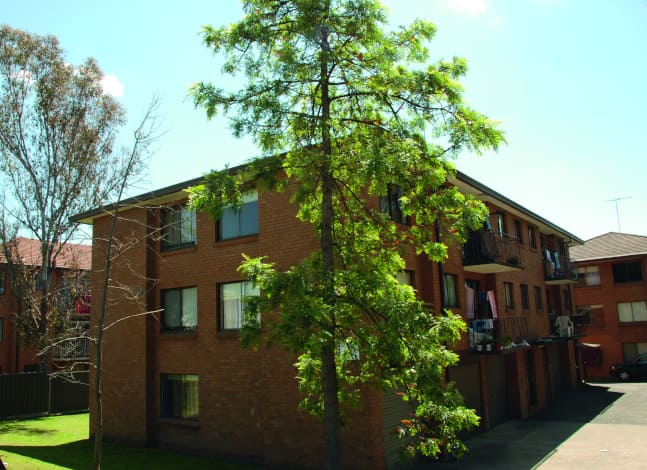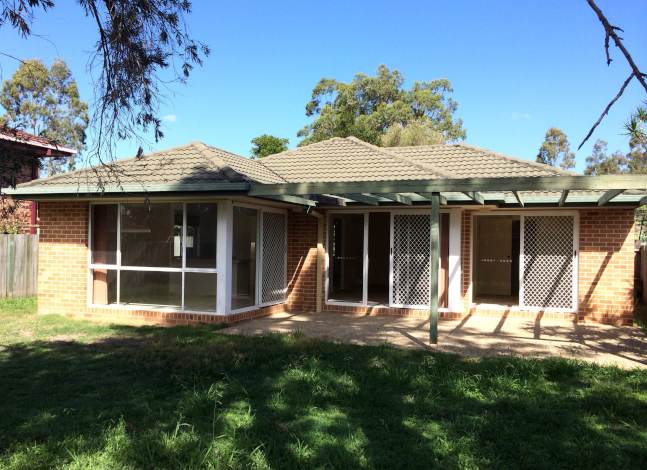How we'll continue to build our property portfolio
Previously, I have reported on a property we recently purchased in Springfield, Queensland.
This is the second property we’ve bought up there and I’m very bullish about the prospects for us to add value through a cost-effective renovation. We purchased the property well under market value – giving us instant equity – but with a few well-placed renovation dollars I’m confident we can accelerate its value via this manufactured equity.
I’ll write about the renovation of this property in future editions of Investment in Action. This month I wanted to discuss our attitude towards planning and goal setting, and our objectives for the period ahead.
Pause for breath
I’ve spent a fair bit of time recently with Ross Le Quesne, our mortgage broker from Aussie Parramatta, talking about our buying plans.
As well as writing this column for Smart Property Investment each month, I travel around Australia presenting our Investment in Action series, detailing our experiences while growing our portfolio. Mr Le Quesne often joins me on stage in a panel of our ‘A Team’ – the professionals who help us grow our portfolio: our accountant, buyer’s agent and depreciation expert.

I get a lot of time to chat with Mr Le Quesne when we’re on the road; we talk strategies, experiences with buying property (he’s also an investor with multiple properties), and the market in general.
Running on the back of a recent trip to Brisbane with Mr Le Quesne for the Home Buyer and Property Investor Show, I reconvened with him in our offices to put down some hard and fast plans around our goals and objectives moving forward. It’s nice to talk about it, but you need to get the points down and ‘actionable’!
The immediate concern for us in building our portfolio is to get a pre-approval in place so we’re ready to buy when the next property comes up. It’s pretty straight forward stuff but it requires some work.
According to Mr Le Quesne, financing shouldn’t be a problem for us moving forward. However, as we invest in a trust structure we need to be on our game to deliver the right documentation to secure financing, as well as be discerning with the lenders we choose to finance through.
A lot of lenders don’t particularly like borrowing within a trust structure – they don’t have the polices in place to deal with it or they simply don’t have the appetite.
As we have a significant amount of debt, there are also parameters in place in terms of their ability to approve financing with lender’s mortgage insurance (LMI) without having to refer to the mortgage insurer. This is something we need to be conscious of when choosing or refinancing with certain lenders.
We’re fortunate that Mr Le Quesne bats for our team and will work with lenders to explain our structure and arrange financing. And I’m confident we can secure financing to support our growing portfolio.
That leaves us with the process of planning the development of our portfolio.
Our strategy of buying under-market- value properties in lower-priced areas with good growth indicators – and then undertaking a cost-effective renovation to boost the property’s value – has been a good one
Available equity
As we sit right now, we have access to just over $500,000 should we refinance our entire portfolio at 90 per cent.
We’re not going to extract all that equity in one hit, but in terms of growing our portfolio we can do a lot of damage with $500,000.
I don’t believe in continually milking a property to realise its capital growth. Refinancing the property once is fine – and we often do this to extract the funds originally channelled into the property – but remember property is a long-term game with the goal to grow equity.
We have properties in our portfolio at various stages in the cycle. Some have only been recently refinanced, whereas others have not been refinanced at all. This balance is important as it means we’ve always got some equity on hand to extract to help us finance the next purchase. But this takes planning.
Analysing our portfolio with Mr Le Quesne highlighted a number of opportunities for us and made us think in terms of the next stage in the growth of our portfolio.
We’ve done very well in the western suburbs of Sydney, where the bulk of the properties in our portfolio are. We were active in this market for around two years, snapping up under-market-value properties before the surge that hit the west took hold.
I feel we were in the market at the right time before investor interest truly picked up pace, and we’ve done well as a result.
We have both houses and units in the western suburbs. This market is too hot now and I feel fortunate that we hit it at the right time. We’ve ridden the growth in the market and will capitalise on that through refinancing or sale, should we go down that route.
This strategy of buying under-market- value properties in lower-priced areas with good growth indicators – and then undertaking a cost-effective renovation to boost the property’s value – has been a good one. It’s not an overly complicated strategy either, or open to significant risk.
For us, areas of Brisbane show similar patterns to those we have seen in western Sydney, and we’re capitalising on that market.
Our latest purchases in Woodridge and Springfield should deliver the same returns we’ve witnessed in the western suburbs of Sydney and we intend to hold these properties over time to realise the true force of a growing market.

Our first option as investors is to keep doing what we do – whether that’s in the Brisbane market or in other markets that show the same patterns and indicators that meet our strategy.
The other option is to shift our focus and look to capitalise on our growing equity base to move into bigger projects or to elevate the price points we currently operate in. For example, we could identify and buy under-market-value properties in the $600,000 to $700,000 range.
There’s a lot to be said for developing a strategy and staying true to it – whether business, relationships or buying property. It’s all too easy to get distracted with the best new thing or to be tempted by ‘not-to-be-missed opportunities’.
I see this quite often in my discussions with investors and talk about it at length when presenting to our readers. Our accountant also has numerous stories about people moving off strategy and getting saddled with underperforming properties that effectively put a halt to their portfolios.
If you pay too much for a property, what is the real impact? Best case, while it should go up in value over time, you might have to wait five or even 10 years before it catches up with the market. That’s a long time to tie up valuable funds in a single property.
Worst case, it could financially cripple you.
Keeping the course
So what will our strategy be? We’re at a point right now in developing our portfolio where people often come unstuck.
We have the capacity to continue to buy the properties we’ve traditionally targeted, and for me this makes a lot of sense.
But we’re also a lot more mature as investors. We’ve got nine properties in our portfolio now and we’ve also done a number of successful renovation projects – some big, some small.
I’m prepared to back myself to expand our capabilities as investors and seek small-scale developments to energise our portfolio and accelerate our buying. This might consist of a sub-division, a knockdown rebuild, a small townhouse development, or the acquisition of a small unit block that we can strata and renovate.
The opportunities are considerable. However, one thing I’m sure about is we’ll still stay true to our strategy of purchasing under-market- value properties in growth locations within the $200,000 to $350,000 range.
I hear numerous stories about people moving off strategy and getting saddled with underperforming properties that effectively put a halt to their portfolios
We’ll keep to our strategy; we’re simply expanding it by adding a little scale to our portfolio, helping us confidently build at a quicker pace.
Yes, there will be some challenges when it comes to financing and loan-to- value ratios (LVRs), but we’ve got a good team on side to support and motivate us.
We’ll be nimble and act confidently to ensure we maintain our portfolio’s growth, its integrity, and importantly, help us to continue to build wealth.
I look forward to sharing the continued development of our portfolio with you.

